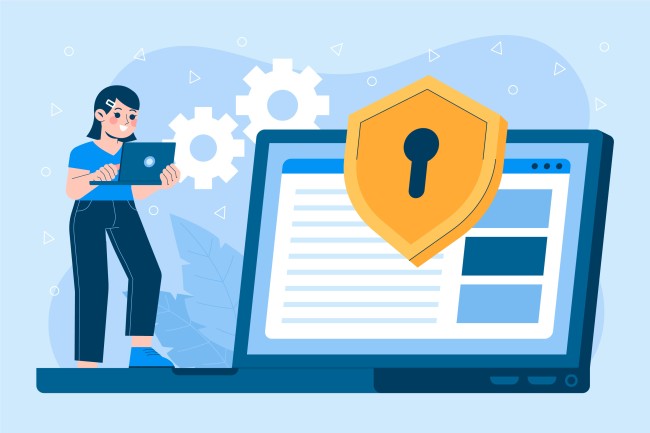
The essence of the modern-day business is data and among all places where it is formed evident is in the universe of Salesforce.
Since Salesforce plays an evermore integral role in managing customer relationships, sales pipelines, and marketing campaigns, the value of the data that is being stored and transacted across the platform cannot be stressed more.
Over the border, cyberattacks have been on the rise, and data breaches have become so common. It is, hence, crucial for every business to come up with proactive approaches that will prevent unauthorized access, loss, or corruption of their salesforce data.
Here in this article we will discuss key strategies on how to protect your salesforce data.
1. Assess Your Security Needs
While providing solutions is the ultimate goal, first you have to determine your organization’s needs in terms of security, and second, identify areas in your Salesforce environment that may put it in danger.
Among the audits, the Salesforce instance should be checked to evaluate access controls, data permissions, and user roles.
Deciphering which data can be designated as sensitive and therefore to be protected as a prioritized task, for example, financially and personally identifiable information (PII), intellectual property, log-in information, and the like.
With the help of analysis and data gathering, you can determine your security requirements and obtain information about the risks you are facing. Consequently, you’ll be empowered to develop a targeted data security strategy.
2. Impose Strong Authentication Procedures And Access rights Strict Regulation
One of the first essential measures of data protection in Salesforce is allowing only the intended, authorized users to gain access.
Implemented a strong password policy, multi-factor authentication (MFA), and session time-out settings to ensure that hackers cannot bypass the steps of authentication to gain entry into the company’s Salesforce instance.
Implement RBAC to maintain a hierarchical structure of access to confidential information and features as per user roles and positions.
Make it a habit to review and adjust user permissions regularly to ensure that those who need to access your data are authorized to do so only to the level of their job requirement.
3. Encrypt Sensitive Data
Encryption is an efficient method of keeping authentication information safe during transit and from theft being observed. Use Salesforce’s native encryption abilities to embed encryption in data fields that consist of identifiable information like social security numbers, credit card numbers, and confidential health records.
As an additional tip on protecting data, you may apply encryption to the file backups and all stored files thereby making vital information unreadable even if the Salesforce system is attacked.
Encryption of this data will allow you to strengthen the fence and bring data leaks down to the minimum level.
4. Regularly Back Up Your Data
The data might be lost due to multiple causes such as human error, compromised systems, or by the means of malicious acts.
It is necessary to take measures to protect your Salesforce data from loss by doing backups of your data regularly and then keeping those backups in a secure location.
Let Salesforce do the data backup for you and set up automated data snapshots at preset periods. Furthermore, consider looking at off-site alternative providers for that extra layer of protection/failure proofing.
Presently, through the generation of contemporary data backups of Salesforce, you can quickly find the data that has been lost and minimize the period of downtime during the business operation.
5. Probe and Verify User Activity
Logging and checking user activity is a must-have tool for your Salesforce ecosystem to safeguard company data from unlawful access and interesting behavior when accessing your Salesforce environment.
Implement the logging and monitoring utility which will be able to log user activities, changes to data in real-time, and access attempts in real-time.
Restricted review and analysis of log files and reports regularly to determine whether there are any suspicious situations or security breaches to conduct the investigation.
Your organization will be able to remain on top of users’ everyday activity hence detect potential security threats at an early stage and proactively minimize risks.
6. Educate and Train Users
Human mistakes are among the most accountable reasons for data breaches suggesting that educating the users and coaching them are parts of information protection strategy that should not be neglected.
Develop training modules, educate users, and provide GYDD as tickets, among other things, to bring awareness about the best practices to users for securely storing Salesforce data, no e-mail spoofing, and response to security issues.
Reinforce the necessity of the use of strong passwords, not sharing passwords with third parties at all, and report any suspicious behavior as soon as it is noticed.
With users being empowered with the knowledge and skills to defend Salesforce data, the risk of incidents with security as well as data breaches can be significantly reduced.
Conclusion
The advocacy of your Salesforce data safety is a necessity in the era of global digital where many cyber risks as well as data breaches are posed to all businesses.
Applying preventive measures, e.g., strong authentication and access controls, encryption, regular data backups, user monitoring, and education, will create a better overall security posture of your Salesforce environment and will help protect your crucial data from potential threats to your Salesforce environment.
By a more efficient response to data protection, you may help build your client’s faith in your services, meet the requirements of regulatory bodies, and then you will be able to keep your future in business.
